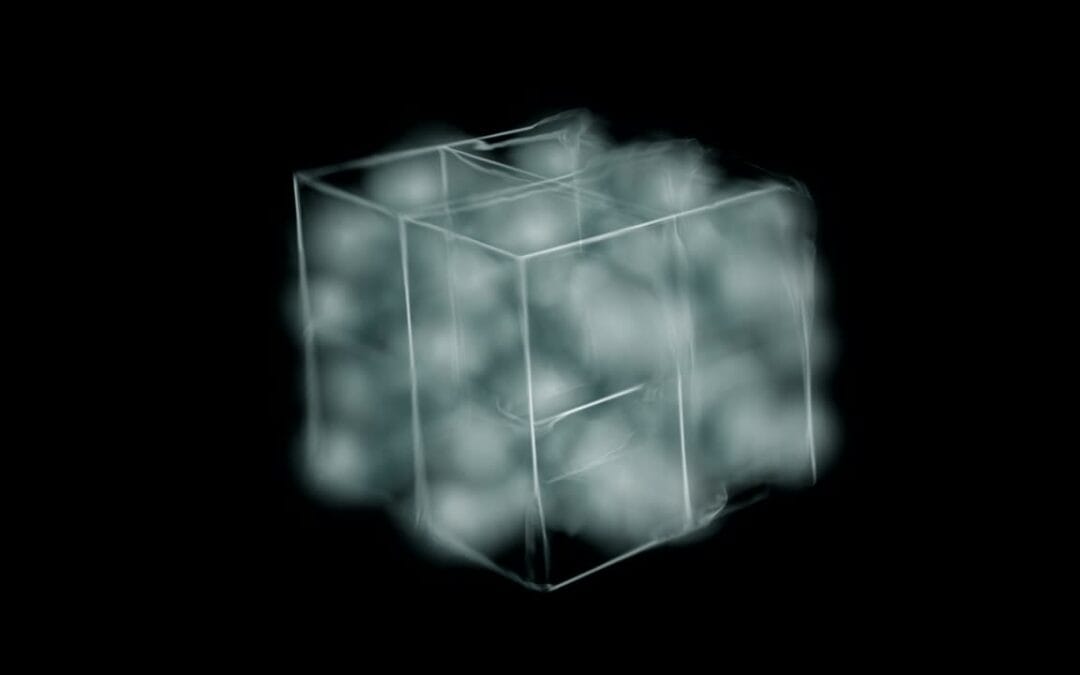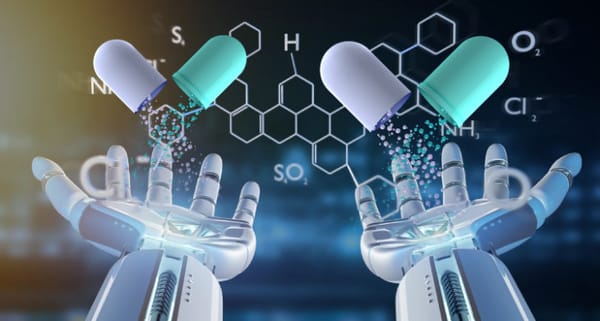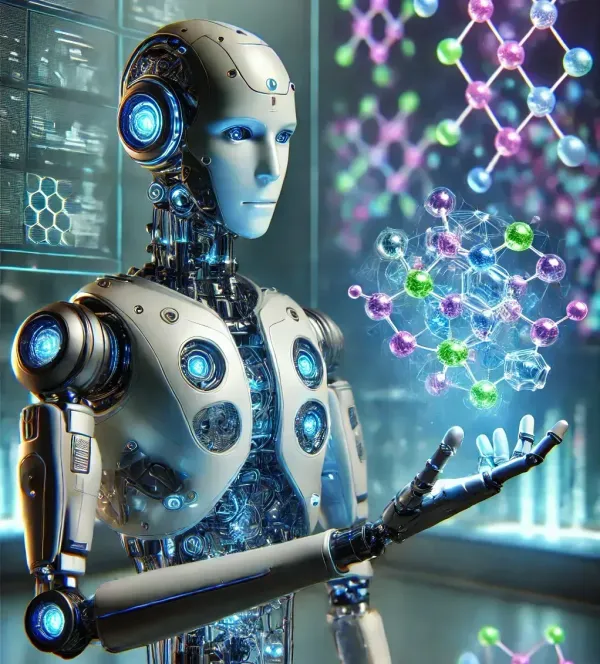Revolutionizing Material Design and Chemistry with MatterGen

In the realm of materials science, the quest for new materials with specific properties has always been a challenging endeavor. Traditionally, this process involved a lot of trial and error, high costs, and extensive time commitments. However, with the advent of artificial intelligence (AI), particularly models like MatterGen developed by Microsoft Research, we're on the cusp of a transformative era in material design and chemistry.
With our new MatterGen model, we're applying the next generation of AI to one of the biggest challenges in materials science: increasing the rate at which we design materials with desired properties. https://t.co/OSdD0CGuc1
— Satya Nadella (@satyanadella) December 7, 2023
What is MatterGen?
MatterGen is a generative AI model that aims to streamline the discovery and design of inorganic materials. It uses a diffusion-based process to generate novel crystalline structures by gradually refining atom types, coordinates, and the periodic lattice. This approach contrasts with the conventional method of screening existing materials databases, which is akin to finding a needle in a haystack. MatterGen allows for a "top-down" approach where you specify desired properties, and the AI designs materials to match those criteria.
Microsoft researchers introduce MatterGen, a model that can discover new materials tailored to specific needs—like efficient solar cells or CO2 recycling—advancing progress beyond trial-and-error experiments. https://t.co/z9yOaV7VGo pic.twitter.com/qrmYHheKlS
— Microsoft Research (@MSFTResearch) January 16, 2025
The Mechanics of MatterGen
- Diffusion Modeling: Much like how image generation models create pictures from noise, MatterGen starts with random atomic arrangements and refines them into stable, functional materials. This process involves several steps of adding and then removing noise from the initial random structure, guided by the desired material properties.
- Fine-Tuning for Specific Properties: MatterGen can be fine-tuned with adapter modules to focus on specific constraints such as chemistry, symmetry, or properties like mechanical strength, electrical conductivity, or magnetic behavior. This customization ensures that the generated materials meet practical industrial needs.
- Multi-Objective Optimization: One of the standout features is its capability to optimize materials for multiple properties at once, a task that would be incredibly labor-intensive for human researchers.
Applications in Material Design
- Energy Storage: Designing materials for batteries with higher energy density or faster charging capabilities could lead to breakthroughs in electric vehicles and portable electronics.
- Catalysis: New catalysts can be discovered that are more efficient or selective for chemical reactions, impacting fields from pharmaceuticals to renewable energy.
- Aerospace and Automotive: Lightweight, high-strength materials could revolutionize industries needing materials that balance strength with weight, like in the design of aircraft or automotive components.
- Electronics: Materials for next-generation semiconductors or those with unique electronic properties could push forward technology in computing and telecommunications.
Impact on Chemistry
- Accelerated Discovery: MatterGen reduces the timeline from discovery to practical application by automating much of the initial design phase, potentially slashing years off traditional development cycles.
- Exploration of Vast Chemical Spaces: With AI, we can explore chemical compositions that were previously out of reach, leading to materials with unprecedented properties.
- Sustainability: By designing materials with precise properties, we can reduce waste from trial-and-error synthesis and promote the use of abundant, non-toxic elements, thereby fostering more sustainable material use.
Current Research Work on Using MatterGen
MatterGen has captured significant attention in the materials science community for its potential to revolutionize how we design and discover new materials. Here's a summary of the key research and findings associated with MatterGen:
Development and Validation
- Model Architecture: MatterGen uses a diffusion-based generative process, which has been detailed in a publication in Nature. This model is designed to generate stable, diverse inorganic materials across the periodic table, fine-tuned for various property constraints (1).
- Performance Metrics: Compared to previous generative models, MatterGen has shown superior performance, generating structures that are more than twice as likely to be novel and stable, and 15 times closer to the local energy minimum (2).
- Experimental Verification: While initial validations are done computationally using Density Functional Theory (DFT), MatterGen's true test lies in experimental synthesis. Microsoft has been collaborating with experimental partners to move these AI-designed materials from computation to reality (3).
Applications Explored
- Multi-Property Design: MatterGen has demonstrated capabilities in designing materials with multiple required properties, like combining high magnetic density with low supply-chain risk elements (3).
- Energy and Environmental Applications: The model has been applied in designing materials for batteries, solar cells, and carbon capture technologies, showcasing its versatility in addressing critical global challenges (4).
- Cross-Disciplinary Impact: Beyond materials science, there's interest in how MatterGen could influence drug discovery and other fields where material properties are crucial (5).
Collaborative Research Efforts
- Academic and Industrial Partnerships: Microsoft has collaborated with institutions like Johns Hopkins University Applied Physics Laboratory to explore MatterGen's impact on materials discovery (6).
- Open-Source Contribution: The source code, training, and fine-tuning data of MatterGen have been released under the MIT license, fostering community involvement and further development.
Challenges and Considerations
- Experimental Validation: While MatterGen can predict and design materials, physical validation remains crucial. Not all AI-generated materials will be synthesizable or stable under real-world conditions.
- Data Dependency: The model's performance is contingent on the quality and comprehensiveness of the training data. Expanding and diversifying datasets will be key to further advancements.
- Ethical and Economic Implications: The technology could disrupt traditional job markets in materials research but also democratize access to innovation, especially for smaller institutions or developing nations.
The Future Outlook
The introduction of MatterGen signifies a shift towards AI-assisted paradigms in materials science. As this technology matures, we can anticipate:
- Integration with Other AI Tools: Combining MatterGen with other AI models for property prediction or with robotic synthesis could create an even more efficient pipeline from concept to product.
- Broader Adoption: As more materials scientists and industries embrace these tools, we might see an exponential increase in material innovations.
- Continuous Learning and Adaptation: AI models like MatterGen will learn from each successful synthesis, refining their predictions and broadening their applicability.
In conclusion, MatterGen stands at the frontier of a new era in materials science and chemistry, promising not just incremental improvements but potentially revolutionary changes in how we discover and utilize materials. The future of material design looks not only more efficient but also more inventive, thanks to the power of generative AI


